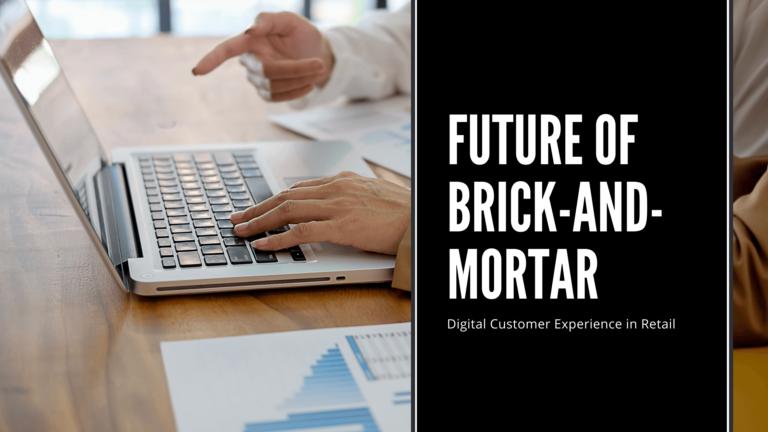Digital Customer Experience in Retail

What are the main KPI’s (Key Performance Indicators) for retailers? There are a few that we can guess – revenue, upsell, stock, etc. It’s clear that as we move forward in a truly digital age, one KPI must be digital customer experience. This requires a deep dive into the customer journey (no, not the drive to the store) including their behavior online and in the store. Digital interaction is now necessary as retailers head into 2020 and beyond. If you aim to create a unique customer experience, personalization should be the core of your strategy. According to Forbes, 80% of customers prefer a personalized offer when it comes to purchasing from a company. When starting to plan a personalized offer, it is crucial to understand what customers may want, where they are, what kind of feeling they want to experience, and where they look to find information.
Are you trying to find out where your customers are? Here is a hint for you, 73% of consumers use multiple channels to shop. And 82% consult their phones during in-store shopping to search for information about the different products. In 2020 the customer journey may start at home online, and travel to the store where they may hop online again to research, then perhaps purchase online – or not. The journey varies depending on the consumer. So they are everywhere! When retailers understand their shoppers and can connect with consumers on multiple platforms may heavily impact the outcome of the purchase decision. (Forbes)
From these two simple numbers, we can already conclude that technologies are a fundamental part of the customer journey. The question here is how we can use technologies to give the customer a more personalized experience. Even in the brick-and-mortar store.

What technologies can do for your customer experience
According to the research published in the Journal of the Academy of Marketing Science, in-store technologies should help to satisfy at least two customer needs – convenience and social presence. This means that those tools must make the purchasing journey easier on one hand and on the other hand give the “feeling that a human being is present”. However, it is not necessary that a person is physically there with you. But that there is a moment, during the journey, in which you feel involved in a unique experience. The feelings of warmth and validation that, consciously or not, you are seeking in-store.
The right balance between human and digital intervention
Technologies that serve this purpose are AR, VR, and new technologies such as smart windows. H&M used smart mirrors in Time-Square that were triggered when customers walked by. Playing with the mirror, you can choose a look and take a selfie. QR codes are shown with the styles presented on the cover of a fashion magazine that can be scanned and shared on social media. This is a great example of using technology to create an immersive experience that can be shared socially.
The feelings of warmth and validation that, consciously or not, your customers are seeking in-store.
In the Madrid flagship store, Sephora installed an AI-powered mirror that can understand personal attributes to suggest the most suitable beauty products for you, helping to find them in the store with a QR code. The recommendation is also tailored according to the season and the trendy fashion of the moment.
Sephora is starting to give their shoppers two different kinds of baskets. One, the red one, for those who would like to be assisted in their shopping and another one, black, for those who don’t want any assistance. This suggests that Sephora is aware that people may be bothered by the interaction with a sales associate. It is a continuing challenge to create a warm and comfortable environment in which consumers are relaxed. For those who enjoy the human interaction, sales associates are critical, but for others digital interaction is preferred. It’s a challenge that retailers have tackled on-line, but now are realizing that many in-store shoppers want and need a similar experience.
As we can see from these two examples, the main challenge with in-store technologies is to provide the most cohesive experience by connecting and integrating three fundamental dimensions of the purchasing experience nowadays: digital, physical, and social (R. Bolton).
Written by Martina Maffezzini

